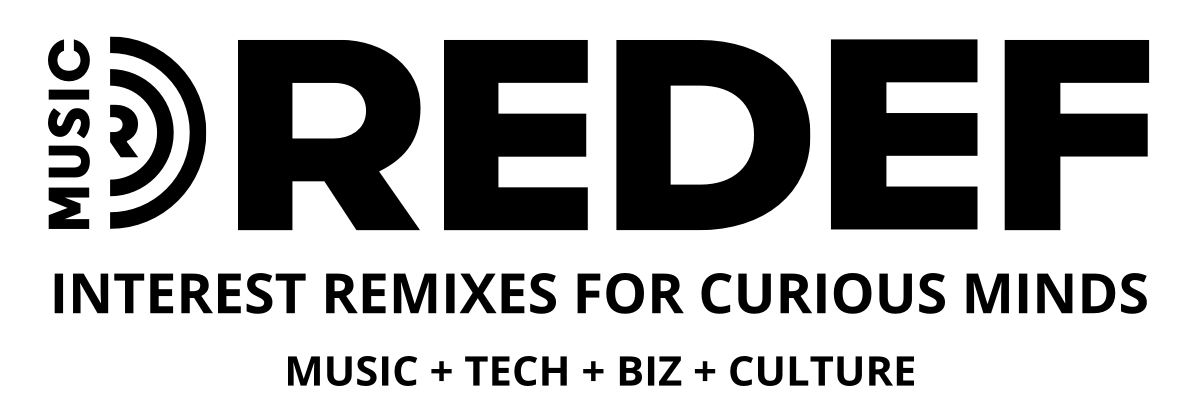| When we were [making 'Supa Dupa Fly'], we didn’t listen to the radio, we didn’t watch videos, so we didn’t hear nor see. We didn’t know what was hot, so we just was creating music. I wish I could get back to that space of not seeing or hearing, because when you see and hear, you start to concentrate, and then you are afraid to try something new because it don’t sound like anything else. |
|
 |
 |
| For your Rock Hall consideration: Missy Elliott at the MTV VMAs, New York, Sept 6, 2001. |
| (Jeff Kravitz/FilmMagic/Getty Images) |
|
|
| quote of the day |
|
“When we were [making 'Supa Dupa Fly'], we didn’t listen to the radio, we didn’t watch videos, so we didn’t hear nor see. We didn’t know what was hot, so we just was creating music. I wish I could get back to that space of not seeing or hearing, because when you see and hear, you start to concentrate, and then you are afraid to try something new because it don’t sound like anything else.”
|
|
- Missy Elliott
|
|
|
| rantnrave:// |
Music for Airpods
A decade ago, the Michigan funk band VULFPECK figured out a novel way to make money from SPOTIFY. It released an album of 30-second tracks of complete silence—exactly long enough to register as an official play on the platform—and asked fans to stream it on repeat while they slept. The album was called SLEEPIFY and it may have been the first example in the streaming era of monetizing what’s known as “functional music.” It worked. In the month or so that “Sleepify” was available on Spotify, Vulfpeck earned about $20,000 in royalties, which it used to finance a tour of the cities where the album had been streamed the most. But it was a short-lived success. Spotify removed the album, which it said was gaming the system and was a violation of its terms and conditions.
Functional music isn’t a new concept. In the mid 20th century the term was used to describe music specifically designed to improve listeners’ health and well-being or, say, increase productivity in the workplace. MUZAK could be considered a form of functional music—meant to be heard but not consciously listened to. BRIAN ENO has described his groundbreaking ambient albums as functional music: carefully composed environments that listeners could wander in and out of. “Artists weren’t supposed to make functional music,” he told the New York Times a few years ago. “So, I thought, ‘Why shouldn’t they?’” And why shouldn’t Vulfpeck, whose album, in addition to being a small-time cash generator, was inarguably music to sleep to and not consciously listen to?
In recent years, functional music has been reclaimed by tech companies using artificial intelligence to generate short, ambient soundscapes on a mass scale. They turn them into albums with literal titles like SLEEP: RAINY NIGHT and SLEEP: FOGGY MORNING, designed to sleep or wake up or work or study to. Spotify has eagerly ingested them and major labels have aggressively pursued distribution deals and other partnerships with them, as Billboard’s ELIAS LEIGHT notes in a story on AI’s growing share of the streaming market. It’s as if they’ve decided to wrest the functional/ambient market away from artists and give it back to the tech founders who they believe are its rightful owners. Vulfpeck’s album could easily have been replicated by the same AI and titled SLEEP: SILENT NIGHT, and it’s hard to imagine Spotify having any interest in taking it down. Funk musicians from Detroit? No. German tech company? Yes. Of course.
ENDEL, the most prominent company in the market (it’s behind those “Sleep” albums and many more like them), estimated last year that the functional music market was generating 120 billion streams annually. Leight says that’s worth $630 million in annual revenue for whoever owns the rights. No wonder even UMG, whose chairman recently complained about streaming sites becoming overcrowded with “lower-quality functional content that in some cases can barely pass for ‘music,’” wants a piece of the lower-quality functional content market.
There’s no right or wrong way to compose and produce music, and artificial intelligence has as much of a right to a place at music’s table as any sequencer or synthesizer or pianoforte. In the long run, it’s a certainty that both good and bad music will result. But would you place your bets, musically speaking, on the tech companies or the artists?
Whether you want to call it ambient music or new age or “wellness hooey,” the New Yorker’s AMANDA PETRUSICH writes, the best composers and performers in that corner of the market “tend to be radical.” They don’t tend to be tech founders. They tend to be people like LARAAJI, who walked into a New York pawnshop in 1969 intending to sell his guitar for rent money, but instead walked out with an Autoharp. He took it home, learned to play it and heavily modified it, turning it from a “dainty or sweet” instrument into one that was "fierce, glimmery, and extraterrestrial."
He was soon collaborating with Eno, who’d heard him busking in Washington Square Park. Today you can find Laraaji and Eno’s AMBIENT 3: DAY OF RADIANCE, released in 1980, and his new box set SEGUE TO INFINITY on Spotify and other streaming services. You may not be able to sleep to the box set. It’s heavy and profound, according to Petrusich, and “It’s hard to imagine enjoying it with cucumber slices cooling your eyelids.” But she also hears, within the digital ambient grooves, “a kind of insistence on joy and transcendence.” Is there any function you’d rather music perform than that?
Etc Etc Etc
Can ALEX RODRIGUEZ disrupt TICKETMASTER? The retired baseball great and business partner MARC LORE, who are part owners of basketball teams the MINNESOTA TIMBERWOLVES and MINNESOTA LYNX, have completed a $20 million fundraising round for their startup JUMP, with which they hope to improve the “fan experience,” including ticketing. Their initial interest is in sports, but major music tours, obviously, use many of the same venues that teams do. One of Jump’s goals is to do away with exclusive ticketing partnerships. Another is to offer fans a way to upgrade their seats in the middle of games (and, presumably, concerts)... Former WARNER NASHVILLE chairman/CEO JOHN ESPOSITO is the new chair of the TJ MARTELL FOUNDATION, which has been reorganizing after a financial scandal... Do any musicians want to play for KING CHARLES?... The Grammy eligibility window will be only 11 months this year, with an earlier-than-usual cutoff of Aug. 31. Music needs to be released by that date to be eligible for the 2024 Grammys. As Billboard notes, it’s the third time since 2009 the Grammys have gone to an 11-month year... Texas’ Queen of the Accordion.
|
| - Matty Karas, curator |
|
|
|
|
|
 |
|
NPR |
|
| Throughline: Dance Yourself Free |
| By Rund Abdelfatah, Ramtin Arablouei, Julie Caine... |
| The deeper you dig into the origins of house music, the more clear it becomes that the history of house, like the history of rock and roll, is a complicated tale of Black cultural resistance. |
|
|
 |
|
V Magazine |
|
| The Reign of Ethel Cain |
| By Mathias Rosenzweig |
| Some are born into royalty, while others must fight for the throne. After a monumental year, Ethel Cain has now taken that seat, her Gucci heels firmly on our necks. |
|
|
 |
|
The New Yorker |
|
| The Transcendence of Laraaji |
| By Amanda Petrusich |
| Much of New Age music exists somewhere between the intellectual avant-garde and wellness hooey. Laraaji shows that the genre’s best practitioners were truly radical. |
|
|
|
|
|
|
|
| atmospheres & soundtracks |
|
 |
|
The New York Times |
|
| When Songs Sound Similar, Courts Look for Musical DNA |
| By Ben Sisario |
| The chord progressions in Ed Sheeran’s “Thinking Out Loud” and Marvin Gaye’s “Let’s Get It On” are part of a debate about just how much of a piece of music can be protected by law. |
|
|
|
|
 |
|
The FADER |
|
| The Making of Mach-Hommy, Part 2: Beloved |
| By Paul Thompson |
| In the second part of our three-part cover story, Mach-Hommy revisits the song that pointed him on a trajectory to underground breakout stardom and speaks for the first time publicly about the extent of his interest in film. |
|
|
|
 |
|
Maremel Institute |
|
| I fell in love with IP…with Mike Huppe, SoundExchange |
| By Gigi Johnson and Mike Huppe |
| CEO Michael Huppe shares how SoundExchange is also a tech company, needing to help and represent its members with opportunities from new technologies, as well as providing a system’s backbone for a growing streaming music industry. |
|
|
|
|
|
|
| what we're into |
 |
| Music of the day |
| “Lose Control” |
| Missy Elliott (feat. Ciara & Fat Man Scoop) |
|
|
|
|
|
|
| Music | Media |
|
|
|
|
|
Suggest a link  |
| “REDEF is dedicated to my mother, who nurtured and encouraged my interest in everything and slightly regrets the day she taught me to always ask ‘why?’” |
|
|
|
|
|